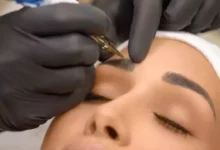Research gives promise for the prevention of diabetic foot ulcers using new insole technology
Diabetic foot ulcers are among the many consequences associated with diabetes, a chronic illness that affects millions of people worldwide. These open wounds, which are often caused by poor circulation and nerve damage, may worsen quickly and result in serious outcomes including hospital stays or even amputations of limbs. A new development in footwear technology, however, provides some promise for reducing this danger.

A new solution for shoe insoles has been revealed by researchers, and it is intended to precisely address the risk of diabetic foot ulcers. By combining pressure-alternating mechanisms, this invention adopts a proactive stance in contrast to traditional insoles that just provide support or cushioning. The insole provides sporadic intervals of respite to soft tissues by cyclically dispersing pressure over various parts of the foot. This improves blood flow and lowers the risk of ulcer development.
This innovative project is being led by main research scientist Muthu B. J. Wijesundara of The University of Texas at Arlington Research Institute. The new technique, according to Wijesundara, “works by cyclically relieving pressure from different areas of the foot, thereby improving blood flow and giving the soft tissues periods of rest.” By keeping the skin and tissues healthy, this method seeks to lower the incidence of diabetic foot ulcers.”
The severity and incidence of diabetic foot ulcers make this breakthrough very important. According to statistics, almost one in three diabetics will get these incapacitating sores at some time in their life, which highlights the critical need for efficient preventative measures. The launch of this cutting-edge insole technology presents a real chance to lessen the strain that millions of people throughout the globe bear.
Wijesundara highlights the revolutionary potential of this technique in a paper that was published in the prestigious International Journal of Lower Extremity Wounds. The insole provides a proactive approach that goes beyond just treating symptoms in order to maintain diabetes patients’ mobility and overall health. It improves quality of life and lessens the financial and psychological burden of diabetes complications by lowering the likelihood of foot ulcers.
As this area of study develops, it becomes clear that creativity is essential to overcoming the obstacles that diabetes presents. The creation of cutting-edge technology, such pressure-alternating insoles for shoes, is an example of a proactive strategy for managing diabetes. These treatments have the potential to completely change how diabetic foot problems are managed and bring about a new era of health and prevention for those who have the disease if they are further developed and widely adopted.







